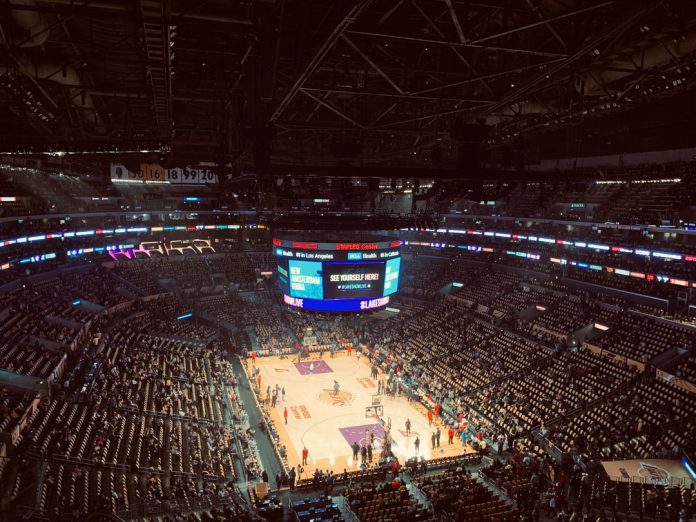
Are you tired of scanning pages of statistics only to find yourself bewildered by betting odds? Stop guessing. Mastering the art of reading NFL and NBA odds can make or break your betting predictions.
Understanding the language of Moneyline odds, spreads, and point totals is more than just jargon-it’s your key to making informed decisions that could reward you handsomely.
Here, we’ll guide you through the crucial steps of reading odds effectively to help you sharpen your sports picks. By the time you’re done with this article, you’ll have a robust foundation for making smarter football and basketball picks to gain the upper hand.
Moneyline Betting in NFL and NBA
In its most straightforward form, Moneyline betting is all about picking the winner. Forget point spreads or how many touchdowns a player will score.
Here, you’re focusing solely on which team will walk away victorious. If you’re new to betting, this is a great starting point because of its simplicity.
In the NFL, Moneyline bets can get interesting due to the unpredictability of games. Weather conditions, injuries, and even the day of the week can all impact the outcome.
So, making a smart NFL pick isn’t just about going with the team that has the best stats. You have to think about other factors that could tip the scales.
Switch gears to the NBA season, and you’ll find Moneyline bets there, too. The NBA is more predictable when it comes to winners and losers, thanks to its indoor playing environment and the generally fewer variables in basketball compared to football. However, upsets can still occur, especially during pivotal playoff games.
The odds in Moneyline betting are set differently for favorites and underdogs. If you’re looking at the NFL, for instance, a strong team might have odds like -150, meaning you’d need to bet $150 to win $100. On the flip side, an underdog team in the NBA might have odds like +200, implying that a $100 bet could win you $200.
Understanding Point Spreads
Unlike Moneyline, where you’re simply picking the winner, point spreads add a layer of complexity and excitement to your betting predictions. In point spreads, you’re not just betting on who will win, but by how much they will win.
The oddsmakers will set a point spread to level the playing field between the two teams. One team, the favorite, will have a negative point spread, while the other, the underdog, will have a positive one. The goal is to beat the spread, not just win the game.
Let’s use an NFL example to make it clearer. Suppose Team A is favored to win by 7 points over Team B. If you bet on Team A, they must win by more than 7 points for you to win your bet.
On the other hand, if you go for Team B, they must either win outright or lose by fewer than 7 points for your bet to come through.
Switching to the NBA, the point spreads can sometimes be smaller due to the higher-scoring nature of basketball. It might be a spread of just 3 or 4 points. Despite the difference in numbers, the logic remains the same. Beat the spread, and you win.
Point spreads create more balanced betting opportunities. For instance, if a powerhouse NFL team is playing a weaker one, few people would bet on the underdog. By introducing a point spread, the odds get more even, attracting bets on both sides.
Over/Under Betting: Not Just About Winners and Losers
Over/Under bets, sometimes known as totals, are pretty straightforward. Here, the focus isn’t on which team will win or lose.
Instead, you’re wagering on the total number of points both teams will score in a game. Oddsmakers set a number, and you choose whether the total points scored will be over or under that number.
For instance, let’s say you’re diving into NFL picks for the week. You see an Over/Under set at 45 for a match between the Patriots and the Broncos.
If you bet the “over,” you’re hoping both teams will combine for 46 points or more. If you choose the “under,” you’re betting the total score will be 44 or fewer points.
Now, imagine you’re exploring the day’s football picks. You might find that the Over/Under for a college football game is significantly higher due to the often fast-paced, high-scoring nature of these games. These different contexts are why it’s crucial to understand the sport you’re betting on.
Prop Bets: The Entertaining Side of Betting Predictions
As you become more familiar with betting prediction tactics, you’ll stumble upon something that adds a bit of flair to the betting world: proposition bets, commonly known as prop bets. These wagers are generally considered the fun side of betting. They offer a chance to bet on specific events within a game, but not directly related to the final outcome.
Say you’re in the mood for some NBA fun. You can place a bet on who will score the first three-pointer of the game. Or maybe you’re examining NFL picks and want to wager on the first team to score a touchdown.
Prop bets can range from the performance of individual players to whether the coin toss will land on heads or tails.
What makes prop bets fascinating is how they allow you to engage with the game in a unique way. They’re not just about using your head; they’re also about trusting your gut and having some fun with your predictions.
You can go from making serious football picks to betting on the color of the Gatorade the winning team will pour on their coach. It’s this kind of diversity that adds a new dimension to sports betting.
Get Ahead of the Game with Accurate Predictions
Navigating the world of sports betting predictions doesn’t have to be akin to navigating a maze. If you’ve made it this far, you now have the tools you need to read and interpret odds like a seasoned bettor. A clearer understanding of Moneyline odds, spreads, and point totals can revolutionize your betting strategy and ensure more informed NFL and NBA picks.
But why stop there? Sign up today for our Daily Best Bets Newsletter and stay ahead of the curve with expert picks and valuable insights tailored just for you.


![Monday’s NBA Basketball Free Predictions [12/29/25]](https://ultimatecapper.com/wp-content/uploads/2025/12/cooper-flagg-mavericks-218x150.jpg)
![Sunday’s NBA Basketball Free Predictions [12/28/25]](https://ultimatecapper.com/wp-content/uploads/2024/10/james-harden-clippers-218x150.jpeg)
